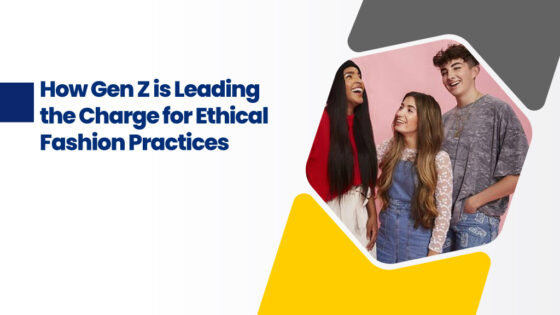In the past few years, upcycling has acted as a major force in the fashion industry. This fashion design innovation involves the reuse and repurposing of pre-existing materials to give fashionable new clothes. This practice reduces wastage and allows a surge in creativity, pushing conventional fashion design. Because today’s theme of sustainability is central to many fashion schools and the minds of designers, it brings into the spotlight the role of upcycling.
The Concept of Upcycling
Upcycling does not break down material into basic elements. In other words, materials are used in their current form for making products of larger value. For instance, old jeans could be used to make the most fashionable jacket or the old vintage scarf you have could turn into a handbag brought into modern times. Via this process, the chain of these raw materials gets extended, which reduces the consumption of new raw materials and consequently minimizes environmental impact.
Upcycling in Fashion Design
The fashion industry is one of the most resource-intensive and wasteful industries. Upcycling makes this waste into beautiful, one-of-a-kind wearable art. Designers who resort to upcycling modes tend to source material from thrift stores, old garments, or industrial waste. This reduces not only the carbon footprint but also creates a very unique look that puts them apart from mass-produced fashions.
Educational Institutions Leading the Way
In India, several institutions are spearheading the integration of sustainable practices like upcycling into their fashion design programs. For students aspiring to make a mark in this field, choosing the right college is crucial. In Tamil Nadu, particularly in Coimbatore, there are notable fashion design colleges that offer programs incorporating upcycling principles.
B Des Fashion Design Colleges in Coimbatore
Coimbatore being the educational hub has so many famous B Des Fashion Design Colleges. These are slowly showing interest in incorporating green design practices, in particular upcycling. Students are encouraged to work with sundry materials and techniques, which take them deeper into understanding how fashion impacts the environment. Most colleges in Coimbatore offer students a platform to engage in upcycling projects. This makes students industrially fit for innovation in fashion and thus promotes sustainability.
Best Fashion Designing Colleges in TamilNadu
In Tamil Nadu today, there is a prime concern toward integrating upcycling within fashion education. Specialized courses have been offered by the best fashion designing college in TamilNadu, where focus will be given to sustainable practices, teaching the fundamentals of fashion designing and advanced practices on repurposing materials.
Students at these colleges learn principles of upcycling, such as sourcing and preparation of materials, the design of sustainable garments, marketing of products, and pitching ideas. The courses usually include workshops, guest lectures, and collaborative workshops by professionals within the industry to ensure that the students are prepared to put upcycling techniques into practice upon graduation.
The Benefits of Upcycling in Fashion
- Environmental Impact: Most of the waste is reduced through upcycling while the requirement for new resources decreases. This practice aids in the conservation of natural resources and lessens pollution.
- Creativity and Innovation: Upcycling challenges designers to out-of-the-box thinking for newer uses of materials that are old. This could result in really innovative designs that shine in fashion.
- Cost-Effectiveness: It mostly enables the creation of high-quality fashion pieces from materials normally tossed out. This is good for young designers and fashion houses that are small in size.
- Creating Unique Fashion Statements: Upcycled clothes most of the time have a special story and look which makes them different from mass-produced items. This, in turn, appeals to consumers who yearn for one-of-a-kind statements in fashion.
Challenges and Future Directions
While upcycling offers lots of benefits, it does come with its challenges. Among those are finding high-quality materials, consistency in design, and breaking somebody’s preconceived notions about upcycled fashion. However, with the increasing demand for sustainable fashion, creative ways to meet these challenges through innovative solutions and increasing awareness for the same are also on the increase.
Upcycling in fashion has a bright future, with constant improvements and evolution in material science and design techniques. Sustainable practice knowledge is updated in curricula for schools to integrate into their programs, enhancing this next generation of designers with the proper tools to lead change toward an improved industry.
Conclusion
Upcycling can epitomize a huge drift toward sustainable and creative practices in the fashion industry. The day it seeps into the academic scenario through reputed institutions such as the best B. Des Fashion Design colleges in Coimbatore will turn their students into leaders to lead a revolution toward a greener, cleaner, and eco-friendlier outlook of the fashion landscape. What’s more, these colleges don’t stop at enhancing the design skills of their students but also go a step ahead in contributing toward a more sustainable future for fashion by including upcycling in their respective curricula.
Upcycling within fashion design is more than a trend; it’s a strategic step toward a more responsible and innovative industry. The more this practice develops, the more creativity it will unleash and the more meaningful change it will drive in how fashion is created and consumed.






